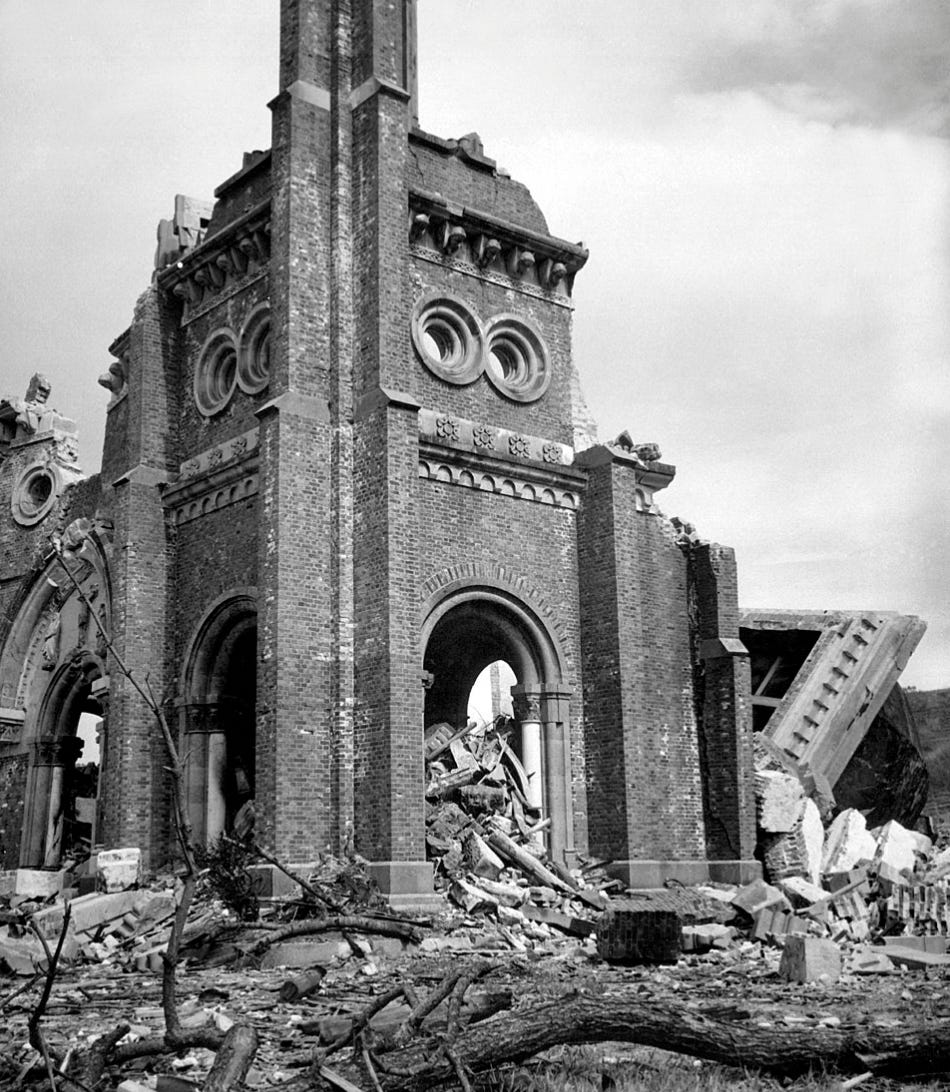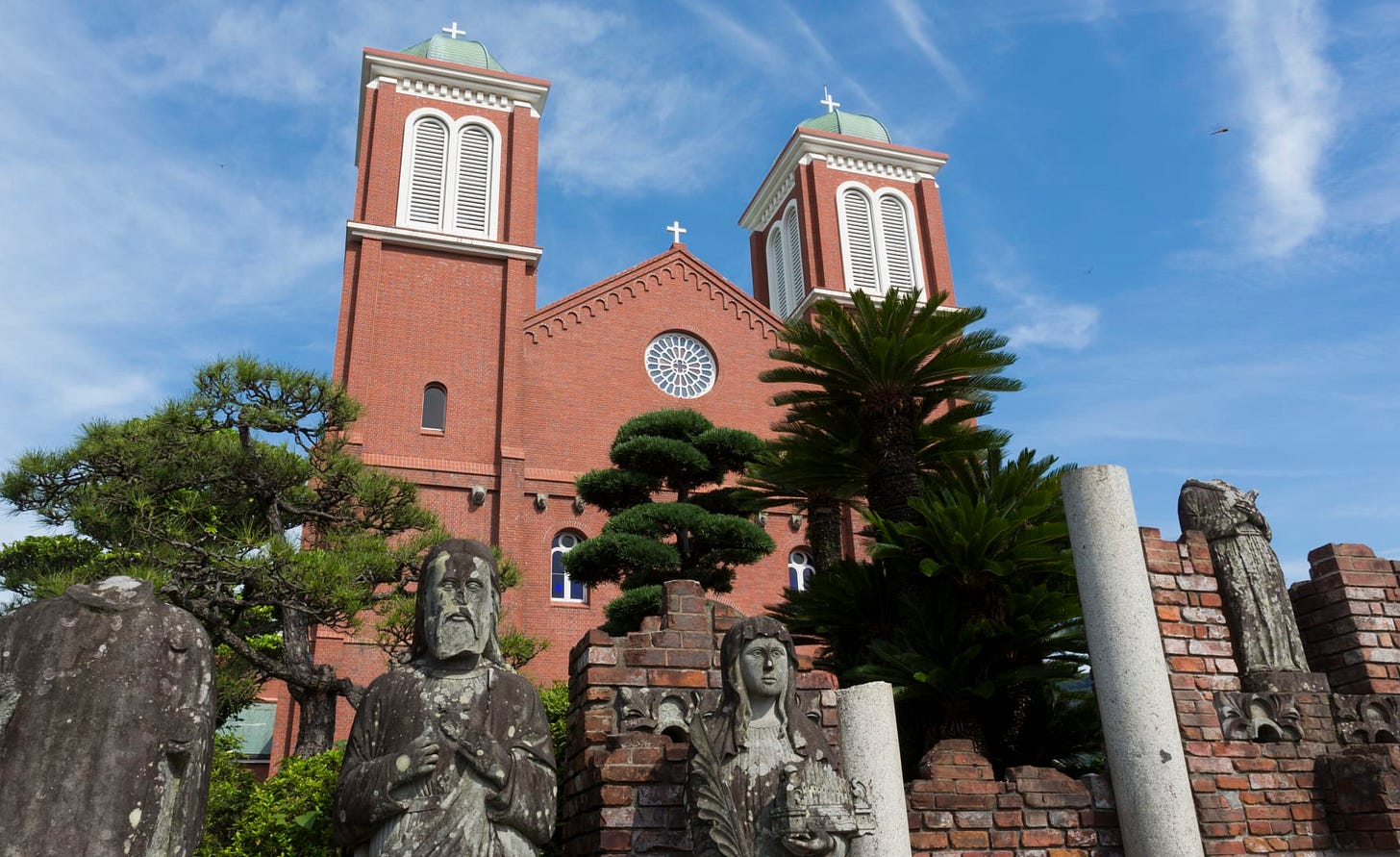Tomorrow - 9th August - is the 80th anniversary of the atomic bombing of Nagasaki. It’s a moment often lost in the grim shadow of Hiroshima: humanity’s nuclear rubicon.
Historians trying to understand how World War II was brought to an end often pass it by, too, focusing instead both on Hiroshima and on the Soviet declaration of war against Japan on August 8th - the impact of which on Japan’s wartime decision-makers ought not to be underestimated.
The ruins of Urakami Catholic Cathedral, which was almost completely destroyed in the atomic bombing of Nagasaki on 9th August.
Twenty years ago, I was living in Nagasaki when the 60th anniversary of the atomic bombing of that city rolled around. The woman I was staying with had been a baby, out in the fields and strapped to her mother’s back, when the fateful moment came.
Her mother either stepped behind a wall or into the house for a moment just before the blast - I can’t now remember which it was. Either way, that decision quite possibly saved mother and baby’s lives. The infant survived to live a full life, becoming a pensioner and advising her two lodgers on 9th August 2005 - one American, one Brit - that westerners might want to stay off the streets of Nagasaki that day.
One of the tasks of the Hiroshima Peace Memorial Museum and the Nagasaki Atomic Bomb Museum is to preserve the memory of what happened in those cities, as vividly and viscerally as possible. Judging by the hushed atmosphere that pervaded the former’s low-lit galleries as I walked through them a few days before the 80th anniversary, they are succeeding remarkably in that mission. It was busy at the Peace Memorial Museum: a heaving sea of visitors flowed through the museum’s exhibition rooms. But we all seemed to have been struck dumb by what we were witnessing.
The second of my two essays for
explores that morning in Hiroshima and the vexed question of whether an atomic weapon ought to have been used at this stage of the war - or, indeed, ever:Meanwhile, while in Hiroshima I made a (very) short video about the anniversary and the Peace Memorial Museum displays:
This and other videos feature on my Instagram channel, which is now up and running. Please do sign up if you’re on Instagram:
Here’s hoping that in another twenty years, historians like me can be marking the centenary of these bombings without having to include new cities on our list of atomic targets.
A sombre thought, so let me leave you with an uplifting image: the restored Urakami Cathedral in Nagasaki, a symbol both of that city’s fascinating cosmopolitan heritage - stretching back to the 1500s - and of its resilience in the face of nuclear disaster.
The restored Urakami Cathedral includes the bell and some of the statues from the original cathedral. Some of the statues lost their heads in the blast.
This newsletter will be back in two weeks’ time, returning to the original Friday schedule, which readers seem to prefer.
Thank you, as always, for being one of those readers, and I wish you all the best for your holidays.
—
Images:
Ruins of Urakami Cathedral: Wikimedia Commons (public domain).
The restored Urakami Cathedral: Japan Travel (fair use).







